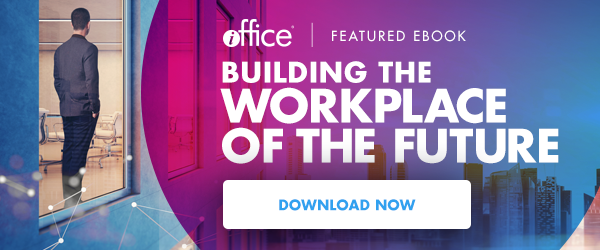15 Amazing Workplace Design Statistics You Should Know


Thirty years ago, the majority of workplace communication took place by landline phones and fax machines. Twenty years ago, nearly everyone worked in a sea of cubicles. Ten years ago, forward-thinking leaders were extolling the virtues of collaboration and the open office space planning. Now many are realizing it’s good to have some walls and adopting activity-based working.
It’s safe to say workspaces have changed dramatically over the past few decades.
What can workplace leaders expect in the coming years? To help you make the best decisions for your organization, we rounded up 15 eye-opening statistics that provide insight into the workplace design of the future.
15 Amazing Workplace Design Statistics
1. Eighty-five percent of employees say they would like to work remotely at least part of the time. (Global Workplace Analytics Statistics, 2017)
2. One-half of all American workers hold a job that is compatible with working remotely at least part of the time. (Global Workplace Analytics Statistics, 2017)
3. Only 3 percent of employees work from home at least half the time, although many more could if their employer permitted it. That’s 3.7 million employees, excluding those who are self-employed. (Global Workplace Analytics Statistics, 2017)
4. Fifty-five percent of typical employees spend the majority of their time away from their desk. (Global Workplace Analytics Statistics, 2017)
5. Seven percent of U.S. employers offer flexible workplace options, but that number reflects an increase of 40 percent over the past five years. (Global Workplace Analytics Statistics, 2017)
6. Ninety-one percent of Americans who worked remotely said they were more productive. (According to More Evidence Against Open Offices, CEB Global)
7. Co-working spaces are becoming more common; WeWork had more than 220,000 members in 234 locations as of March 2018. (According to The Numbers Behind WeWork’s Growing Empire)
8. Up to 40 percent of office space can be vacant at any given time. (2017 Occupancy Benchmarking Report, JLL, 2017)
9. Of 81 global companies surveyed by JLL, 57 percent said they track space utilization. (2017 Occupancy Benchmarking Report, JLL, 2017)
10. Only 13 percent of the global workforce is highly engaged and highly satisfied with their workplace. (Steelcase Global Report: Engagement and the Global Workplace)
11. Eighty-eight percent of highly engaged employees feel they have control over their work experience, while only 14 percent of highly disengaged employees feel the same. (Steelcase Global Report: Engagement and the Global Workplace)
12. One-third of employees said they considered leaving their jobs because of a negative work environment. (5 Dynamics Organizational Survey: Most Businesses Have a Teamwork Problem)
13. By 2020, organizations that support a “choose your own workstyle” culture will boost employee retention rates by more than 10 percent. (Measuring Employee Engagement: Past, Present and Future)
14. Seventy-five percent of employees who work from home earn over $65,000 per year. (Global Workplace Analytics Statistics, 2017)
15. A typical business would save $11,000 per person per year by offering telework. (Global Workplace Analytics Statistics, 2017)
Key Takeaways About Workplace Design
Based on these statistics, we have three predictions about workplace design in the not-so-far-off future:
- The open office floor plan will be replaced with activity-based working for a more balanced combination of “me” spaces (cubicles and private spaces), “we” spaces (collaborative areas and conference rooms) and support space (cafeterias, fitness centers and storage).
- More companies will begin offering telecommuting opportunities — at least part of the time — to reduce energy costs and increase employee satisfaction. This could lead to less space allocated to independent workstations and more space for collaboration.
- More companies will adopt hot desking or hoteling over dedicated workstations due to the rising costs of real estate and concerns about poor space utilization.
If there’s one word we would use to describe the workplace design of the future, it’s “flexible.” By creating an office environment where employees can choose where they sit (or stand) based on the work they’re doing—and powering it with employee-centric workplace technology—you’ll stay ahead of the curve.
